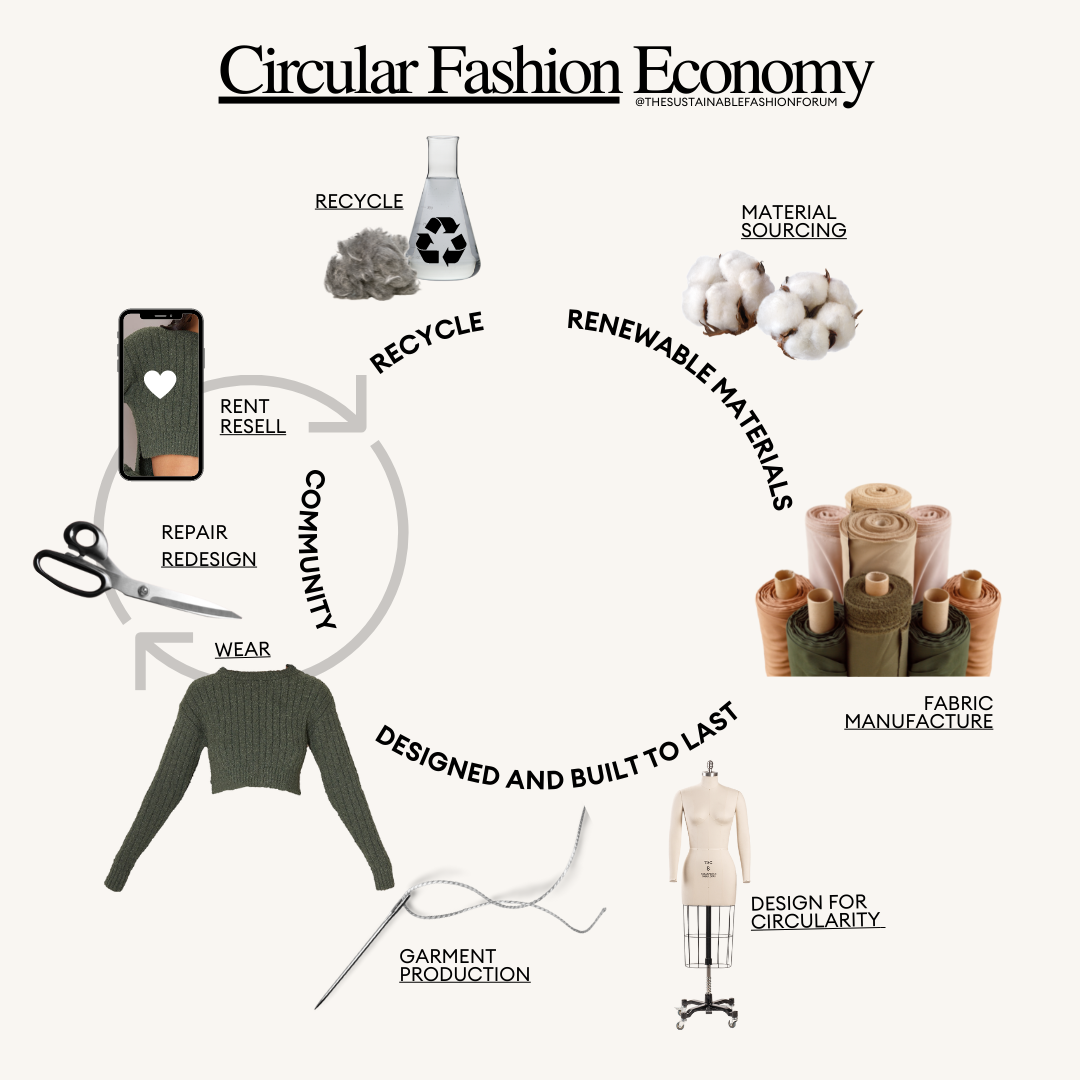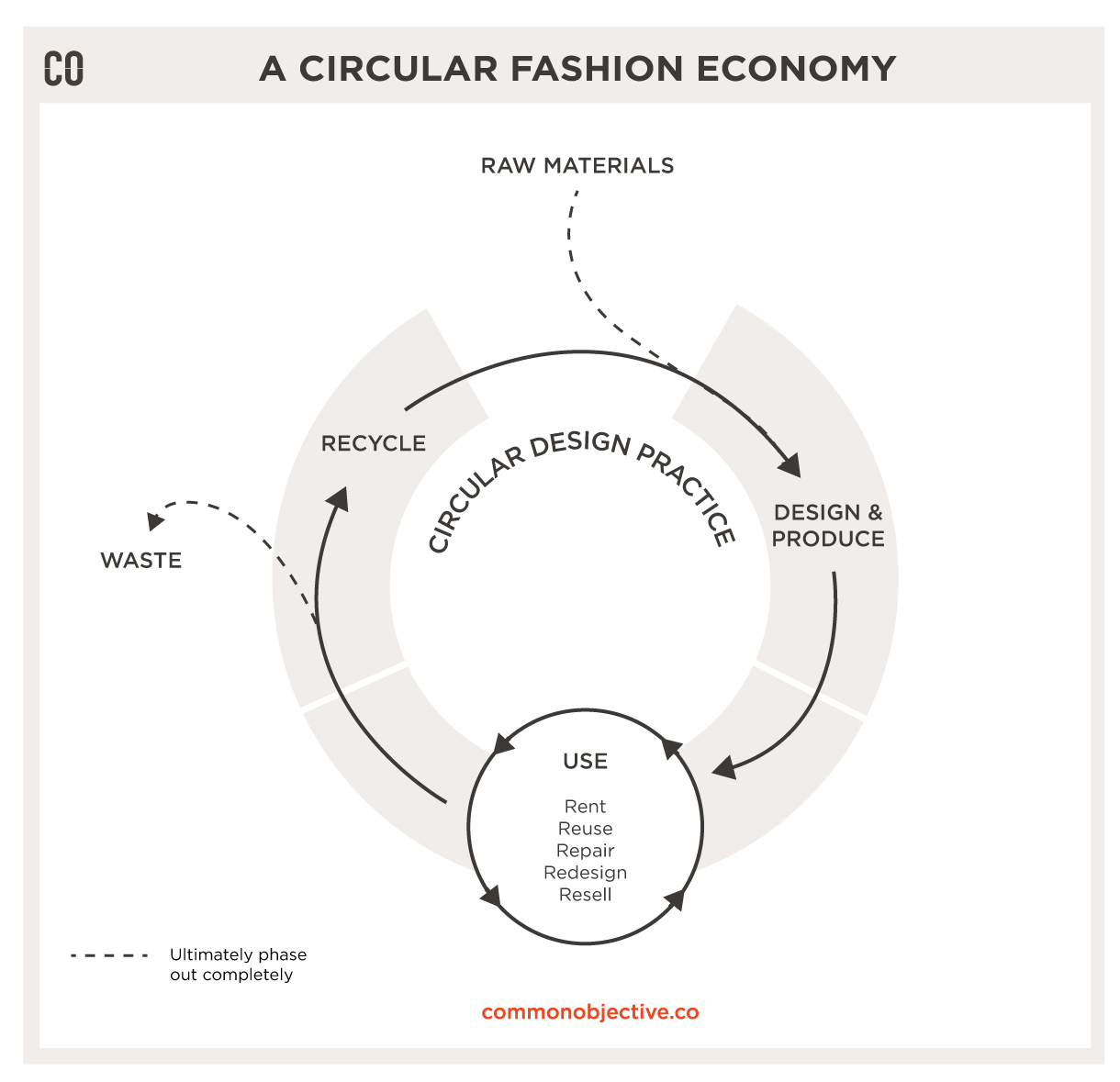What is Circular Fashion?
Circular fashion is a revolutionary approach in the fashion industry that redefines how we create, use, and dispose of clothing and accessories. Unlike the traditional linear model of fashion, which typically follows a ‘take-make-dispose’ pattern, circular fashion seeks to close the loop by ensuring that products are designed for longevity, reuse, and recycling. This practice not only contributes to sustainability but also helps in reducing waste and minimizing the environmental footprint of fashion.

Illustration of the circular fashion economy.
Source: The Sustainable Fashion Forum
The Principles of Circular Fashion
The foundation of circular fashion lies in several key principles:
- Design for Longevity: Clothes should be made to last, both in terms of quality and style, allowing them to be worn over a long time.
- Emphasis on Repair and Maintenance: Circular fashion encourages the repairability of garments, empowering consumers to extend the life of their clothing instead of discarding it.
- Recycling and Material Recovery: At the end of their life, products should be recyclable or made from recycled materials, ensuring that the resources used can be reclaimed and repurposed.
- Responsible Consumption: Educating consumers about the impact of their purchases, promoting conscious buying behavior and the value of second-hand shopping.

Infographic explaining circular fashion concepts.
Source: The Boutique at Seneca
The Importance of Circular Fashion
The fast fashion industry has significantly contributed to environmental deterioration, with excessive waste generation being a primary concern. Estimates suggest that around 92 million tons of textile waste is produced globally each year. Circular fashion offers solutions to these problems:
- Reducing Waste: By adopting circular practices, brands and consumers can play a pivotal role in reducing textile waste.
- Conserving Water and Energy: Circular fashion methods often involve less water and energy than traditional manufacturing processes.
- Promoting the Circular Economy: This approach stimulates economic growth by creating new jobs in recycling, refurbishment, and rental businesses.

Framework for circular design in fashion.
Source: Common Objective
Implementing Circular Fashion
Transitioning to a circular fashion model requires collaboration among various stakeholders, including designers, manufacturers, retailers, and consumers. Brands are encouraged to rethink their design processes, opting for sustainable materials and production methods. Retailers can implement take-back schemes to recycle worn clothing. Consumers can support circular fashion by choosing brands that prioritize sustainability and by buying second-hand or repairing existing clothing.

Circular fashion promotes a more sustainable model for clothing consumption.
Source: Hula Global
Conclusion
Circular fashion is not merely a trend; it represents a necessary shift towards sustainable practices in the fashion industry. By understanding its principles, recognizing the importance of sustainability, and actively participating in circular practices, we can collectively contribute to a healthier planet. The transformation of the fashion system into a circular economy promises not only ecological benefits but also a thriving economic model that prioritizes people and the planet.